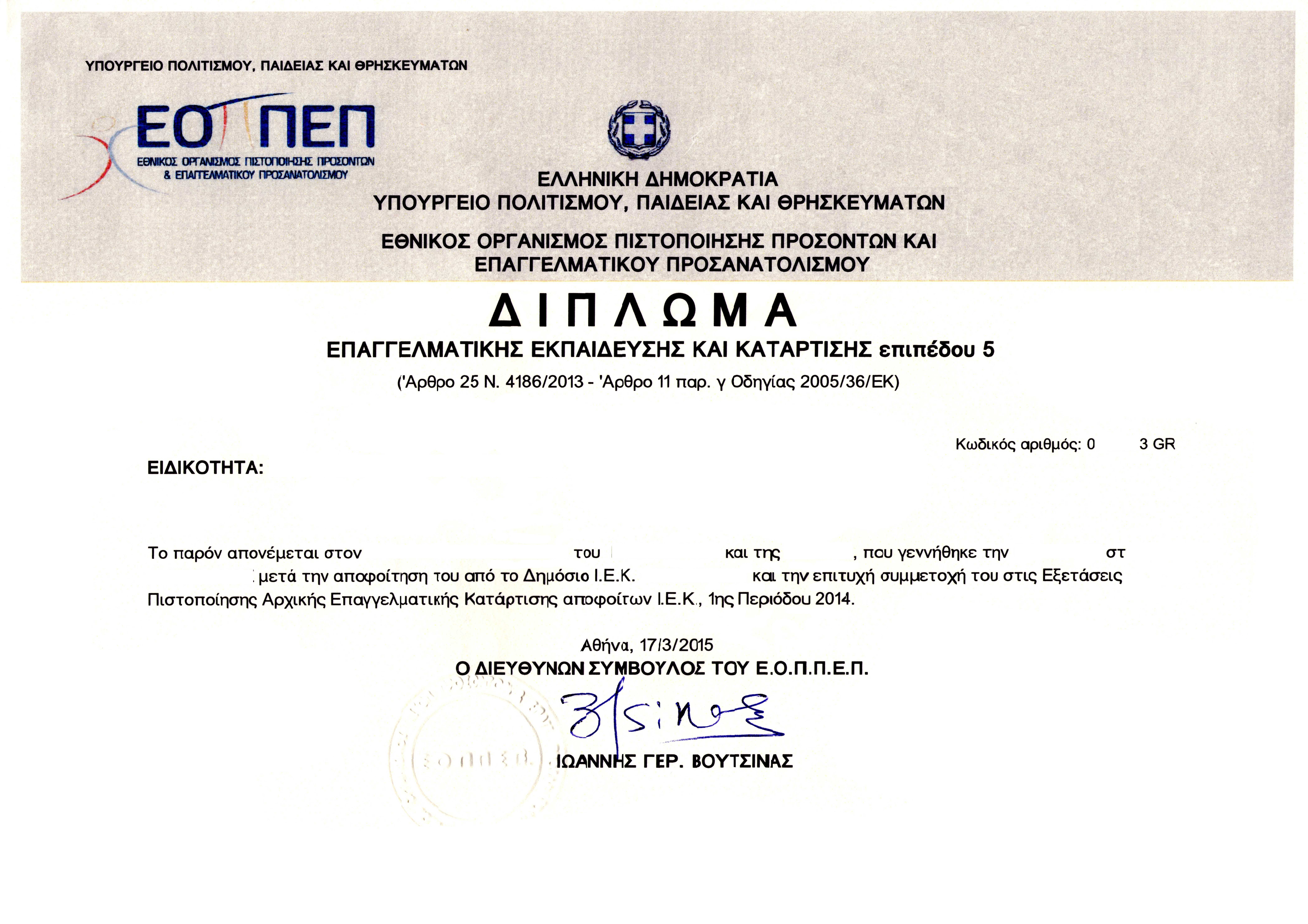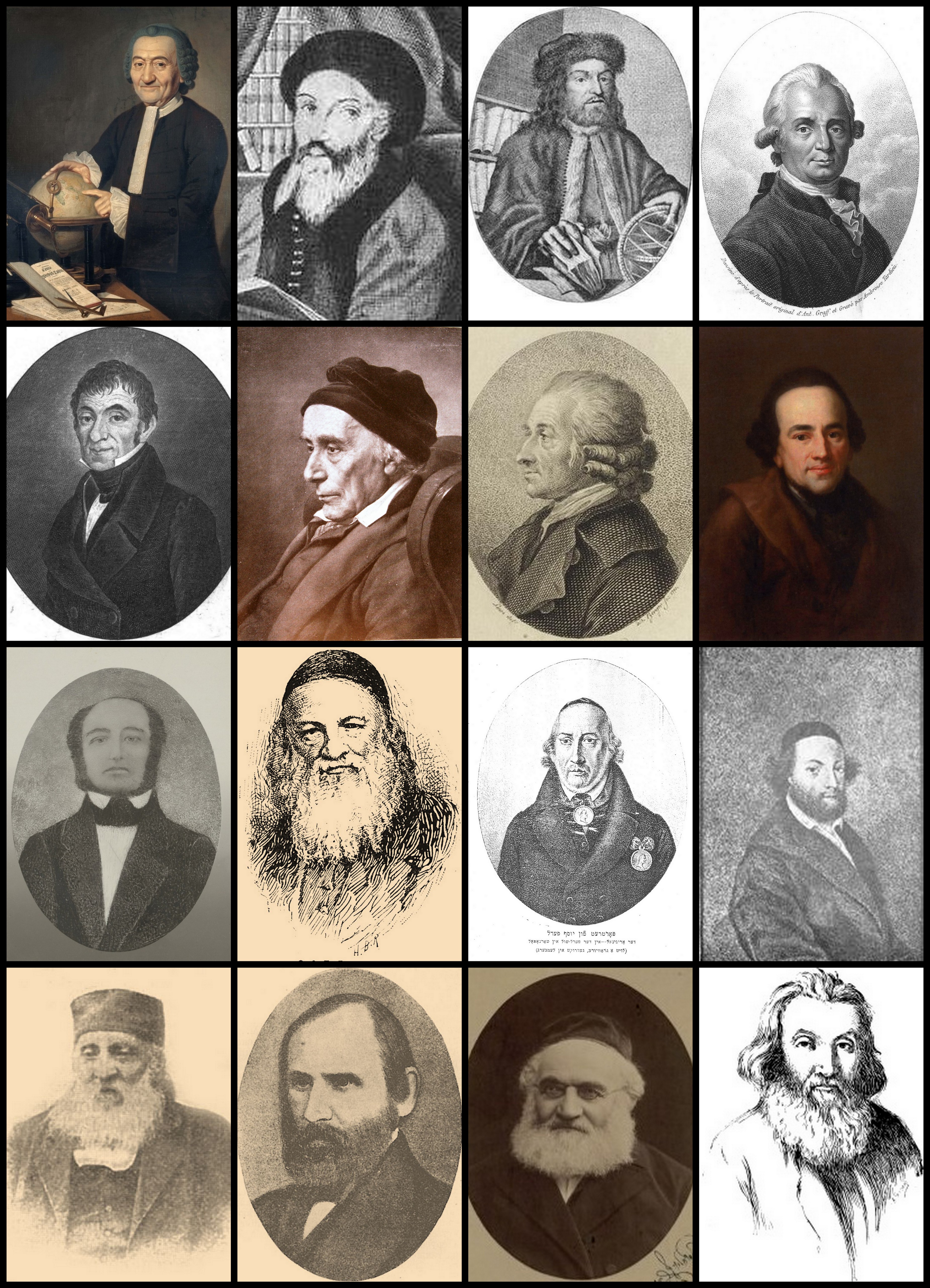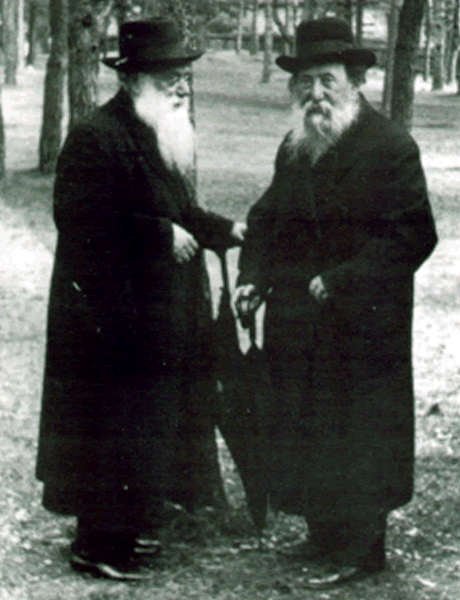|
Naftali Zvi Yehuda Berlin
Naftali Zvi Yehuda Berlin (20 November 1816 in Mir, Russia – 10 August 1893 in Warsaw, Poland), also known as Reb Hirsch Leib Berlin, and commonly known by the acronym Netziv, was an Orthodox rabbi, ''Rosh yeshiva'' (dean) of the Volozhin Yeshiva and author of several works of rabbinic literature in Lithuania. Family Berlin was born in Mir, today in Belarus, in 1816 into a family of Jewish scholars renowned for its Talmudic scholarship. His father Jacob, while not a rabbi, was a Talmudic scholar descendant of a German rabbinic family; his mother was directly descended from Rabbi Meir Eisenstadt. According to some sources such as his nephew the torah temima (reb baruch halaivy epstien), Berlin initially was a weak student. Legend has it that he applied himself to his studies after overhearing his parents debating whether he should pursue a trade. His first wife was the daughter of Rabbi Yitzchok of Volozhin, the son of Rabbi Chaim Volozhin. His second wife was his niece, a ... [...More Info...] [...Related Items...] OR: [Wikipedia] [Google] [Baidu] |
Volozhin Yeshiva
Yeshivas Etz Ḥayyim (), commonly called the Volozhin Yeshiva (), was a prestigious Lithuanian ''yeshiva'' located in the town of Volozhin, Russian Empire (now Valozhyn, Belarus). It was founded around 1803 by Rabbi Ḥayyim Volozhiner, a student of the famed Vilna Gaon, and trained several generations of scholars, rabbis, and leaders. It is considered the first modern ''yeshiva'', and served as a model for later Misnagedic educational institutions. The institution reached its zenith under the leadership of Rabbi Naftali Zvi Yehuda Berlin, who became ''rosh yeshiva'' in 1854. In 1892, demands of the Russian authorities to increase secular studies forced the ''yeshiva'' to close. It re-opened on a smaller scale in 1899 and functioned until the outbreak of World War II in 1939. During the War German soldiers used the building as a stable, and it was subsequently converted into a canteen and deli. The site was returned to the Jewish community of Belarus in 1989. It is considered a ... [...More Info...] [...Related Items...] OR: [Wikipedia] [Google] [Baidu] |
Meir Eisenstadt
Meir ben Izsak Eisenstadt ( he, מאיר איזנשטט, ''also'' Meir Ash, c. 1670 in Poznań – 1744 in Eisenstadt) was the author of responsa and other works of rabbinic literature. An authority on Halakha, he was consulted by rabbis from Turkey, Germany and Italy. He is known as the Panim Me'irot (or ''Punim Meirois'' in Yiddish) after his major work called ''Shu"t Panim Me'irot''. He is also known as the Maharam Ash (or Maharam Esh) the Hebrew acronym for "Our Teacher, Rabbi Meir EisenStadt". Biography After serving as a dayan in Posen and rabbi in Szydłowiec, Poland, he went to Germany and settled in Worms where he headed the yeshiva. When Worms was taken by the French in 1701 he moved to Prostějov (german: Prossnitz) as rabbi. From 1711 to 1714 he returned to Szydłowiec but then moved to Eisenstadt (now in Austria) (adopting the name of the town) serving as rabbi of the Seven Communities. Eisenstadt greatly influenced the nature of the community and his yeshiv ... [...More Info...] [...Related Items...] OR: [Wikipedia] [Google] [Baidu] |
Ohel Chaima Solowiejczyka I Cwi Naftalego Berlina-Ohel Of Chaim Solowiejczyk And Cwi Naftali Berlin-01 , Shanghai
{{Disambiguation ...
Ohel may refer to: *Ohel (social services), a children's home and family services organization in New York *Ohel (biblical figure), the son of Zerubbabel, mentioned in I Chronicles *Ohel (Chabad-Lubavitch), burial place of the sixth and seventh Lubavitcher Rebbes *Ohel (grave), a structure built over the graves of Rebbes, prophets and tzaddikim *Ohel Theater, an Israeli theater company, active 1925–1969 See also *Ohel Leah Synagogue, Hong Kong *Ohel Rachel Synagogue The Ohel Rachel Synagogue (Hebrew for "Tent of Rachel") is a Sephardi synagogue in Shanghai, China. Built by Sir Jacob Elias Sassoon in memory of his wife Rachel, it was completed in 1920 and consecrated in 1921. Ohel Rachel is the largest ... [...More Info...] [...Related Items...] OR: [Wikipedia] [Google] [Baidu] |
Diplomas
A diploma is a document awarded by an educational institution (such as a college or university) testifying the recipient has graduated by successfully completing their courses of studies. Historically, it has also referred to a charter or official document of diplomacy. The diploma (as a document certifying a qualification) may also be called a testamur, Latin for "we testify" or "certify" (testari), so called from the word with which the certificate begins; this is commonly used in Australia to refer to the document certifying the award of a degree. Alternatively, this document can simply be referred to as a degree certificate or graduation certificate, or as a parchment. The certificate that a Nobel laureate receives is also called a diploma. The term diploma is also used in some historical contexts, to refer to documents signed by a King affirming a grant or tenure of specified land and its conditions (see Anglo-Saxon Charters and Diplomatics). Usage Australia In Austr ... [...More Info...] [...Related Items...] OR: [Wikipedia] [Google] [Baidu] |
Haskalah
The ''Haskalah'', often termed Jewish Enlightenment ( he, השכלה; literally, "wisdom", "erudition" or "education"), was an intellectual movement among the Jews of Central and Eastern Europe, with a certain influence on those in Western Europe and the Muslim world. It arose as a defined ideological worldview during the 1770s, and its last stage ended around 1881, with the rise of Jewish nationalism. The ''Haskalah'' pursued two complementary aims. It sought to preserve the Jews as a separate, unique collective, and it pursued a set of projects of cultural and moral renewal, including a revival of Hebrew for use in secular life, which resulted in an increase in Hebrew found in print. Concurrently, it strove for an optimal integration in surrounding societies. Practitioners promoted the study of exogenous culture, style, and vernacular, and the adoption of modern values. At the same time, economic production, and the taking up of new occupations was pursued. The ''Haskalah'' pr ... [...More Info...] [...Related Items...] OR: [Wikipedia] [Google] [Baidu] |
Shimon Shkop
Shimon Yehuda Shkop ( he, שמעון שקופ; 1860 – October 22, 1939) was a rosh yeshiva (dean) of the Yeshiva of Telshe and then of Yeshiva Shaar HaTorah of Grodno, and a Talmid Chacham (Talmudic scholar). Early life Shkop was born in Torez, today in Belarus, in 1860. At the age of twelve he went to study in the Mir Yeshiva for two years. He then traveled to the Volozhin yeshiva where he studied with Naftali Zvi Yehuda Berlin for six years. His study partners included Chaim Ozer Grodzinski. Telz and Grodno Shkop married a niece of Eliezer Gordon, and in 1884 was appointed a rosh mesivta at Telz Yeshiva, where he remained for 18 years. While there, he developed a system of Talmudic study which became known as the "Telz way of learning." In 1903, he became rabbi of Moltsh, and in 1907 of Bransk. Among his students in Moltsh was Yechezkel Sarna, who studied under Shkop for a year in 1906, before leaving to the Slabodka yeshiva when Shkop himself left. From 1920 to 1 ... [...More Info...] [...Related Items...] OR: [Wikipedia] [Google] [Baidu] |
World War II
World War II or the Second World War, often abbreviated as WWII or WW2, was a world war that lasted from 1939 to 1945. It involved the vast majority of the world's countries—including all of the great powers—forming two opposing military alliances: the Allies and the Axis powers. World War II was a total war that directly involved more than 100 million personnel from more than 30 countries. The major participants in the war threw their entire economic, industrial, and scientific capabilities behind the war effort, blurring the distinction between civilian and military resources. Aircraft played a major role in the conflict, enabling the strategic bombing of population centres and deploying the only two nuclear weapons ever used in war. World War II was by far the deadliest conflict in human history; it resulted in 70 to 85 million fatalities, mostly among civilians. Tens of millions died due to genocides (including the Holocaust), starvation, ma ... [...More Info...] [...Related Items...] OR: [Wikipedia] [Google] [Baidu] |
Eastern Europe
Eastern Europe is a subregion of the Europe, European continent. As a largely ambiguous term, it has a wide range of geopolitical, geographical, ethnic, cultural, and socio-economic connotations. The vast majority of the region is covered by Russia, which spans roughly 40% of the continent's landmass while accounting for approximately 15% of its total population."The Balkans" , ''Global Perspectives: A Remote Sensing and World Issues Site''. Wheeling Jesuit University/Center for Educational Technologies, 1999–2002. It represents a significant part of Culture of Europe, European culture; the main socio-cultural characteristics of Eastern Europe have historically been defined by the traditions of Slavs and Greeks, as well as by the influence of Eastern Christianity as it developed through t ... [...More Info...] [...Related Items...] OR: [Wikipedia] [Google] [Baidu] |
Chaim Soloveitchik
Chaim (Halevi) Soloveitchik (Yiddish: חיים סאָלאָווייטשיק, pl, Chaim Sołowiejczyk), also known as Reb Chaim Brisker (1853 – 30 July 1918), was a rabbi and Talmudic scholar credited as the founder of the popular Brisker approach to Talmudic study within Judaism. He is also a member of the Soloveitchik dynasty, as the son of the Beis HaLevi. He is also known as the Gra"ch (Hebrew: גר״ח), an abbreviation of "HaGaon Reb Chaim." Biography Soloveitchik was born in Volozhin on March 25, 1853, where his father, Rabbi Yosef Dov Soloveitchik served as a lecturer in the famous Volozhiner Yeshiva. Prior to his birth, Soloveitchik's father was passed for the position of ''Rosh yeshiva'' at the Volozhiner Yeshiva, in favor of Naftali Tzvi Yehuda Berlin in 1854, ultimately resulting in their family moving away from Volozhin. After a few years, his father was appointed as a rabbi in Slutzk, where young Chaim was first educated. While still a youngster, his genius ... [...More Info...] [...Related Items...] OR: [Wikipedia] [Google] [Baidu] |
Yosef Dov Soloveitchik (Beis Halevi)
Yosef Dov Soloveitchik (born 1820 in Nesvizh, Minsk Governorate, Russian Empire; died May 1, 1892 in Brest-Litovsk, Grodno Governorate, Russian Empire) was the author of Beis Halevi, by which name he is better known among Talmudic scholars. He was the great-grandson of Chaim Volozhin. Early years Yosef Dov Soloveitchik was born to Rivka, a granddaughter of Chaim Volozhin. His father was Yitschok Ze'ev, descendant of Simcha Rappaport. In his youth, Soloveitchik lived in Brod. One anecdote illustrates his early mastery of rabbinic learning. Shlomo Kluger, the rabbi of Brod, enjoyed engaging in Talmud studies with him. When Soloveitchik was about to leave Brod, Kluger is reputed to have said to him, “You have always resolved my ''kushyos'' (difficult Talmudic questions). But I have one difficulty you cannot resolve. How will I manage to part from you?” Rosh yeshiva Soloveitchik was reputed to have one of the great minds of his time. In 1854, he was considered a candidate for ... [...More Info...] [...Related Items...] OR: [Wikipedia] [Google] [Baidu] |
Refael Shapiro
Rabbi Refael Shapiro (1837–1921) was the famed Rosh Yeshiva of the Volozhin yeshiva located in the town of Volozhin, Russia, (now Valozhyn, Belarus), and a son-in-law of Rabbi Naftali Zvi Yehuda Berlin (the ''Netziv'').Yeshiva Eitz Chaim VolozhinRav Refael Shapiro accessed 20 April 2016 After the Volozhin yeshiva was closed down in 1892 by order of the Russian government, he reopened it, albeit on a smaller scale in 1899. He was the father-in-law of Rabbi Chaim Soloveichik of Brisk, now in Belarus, and is known as the ''Toras Refael'' after his primary work. Rabbi Shapiro ordained Rabbi Isser Yehuda Unterman (who would eventually become one of Israel's chief rabbis) who studied in the Kollel of the Volozhin yeshiva before opening his own yeshiva in the neighboring town of Vishnyeva (Vishnevo, Belarus). Additionally, Rabbi Shapiro gave Semicha (rabbinical ordination) to Rabbi Moshe Shatzkes, known as the Łomża Rov, and Rabbi Meir Joshua Rosenberg. Rabbi Shapiro died on the 23 ... [...More Info...] [...Related Items...] OR: [Wikipedia] [Google] [Baidu] |
Moscow
Moscow ( , US chiefly ; rus, links=no, Москва, r=Moskva, p=mɐskˈva, a=Москва.ogg) is the capital and largest city of Russia. The city stands on the Moskva River in Central Russia, with a population estimated at 13.0 million residents within the city limits, over 17 million residents in the urban area, and over 21.5 million residents in the metropolitan area. The city covers an area of , while the urban area covers , and the metropolitan area covers over . Moscow is among the world's largest cities; being the most populous city entirely in Europe, the largest urban and metropolitan area in Europe, and the largest city by land area on the European continent. First documented in 1147, Moscow grew to become a prosperous and powerful city that served as the capital of the Grand Duchy that bears its name. When the Grand Duchy of Moscow evolved into the Tsardom of Russia, Moscow remained the political and economic center for most of the Tsardom's history. When th ... [...More Info...] [...Related Items...] OR: [Wikipedia] [Google] [Baidu] |






